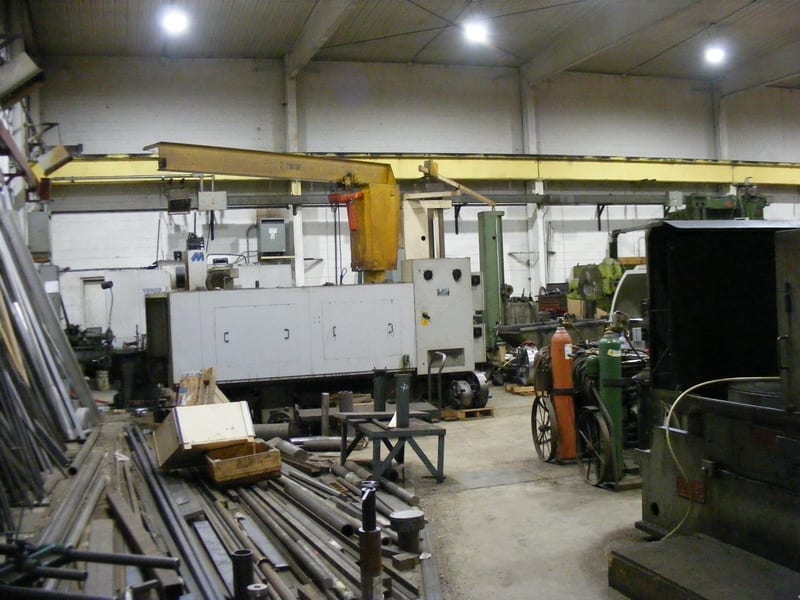
What are High Bay Lights?
There are a lot that High Bay LED and Low Bay LED Fixtures have in common. If you were to place two fixtures side by side it would be difficult to determine which was the high bay or low bay fixture. High bay and low bay lights have a lot in common. But this similarity adds to the confusion, and when you should use a high bay or a low bay. Below, we try to settle the low bay vs high bay lighting question.
What are High Bays?
First, lets define these words terms of rooms and not lights. A High Bay is a tall ceiling space. The “Bay” is an area with a ceiling that is 20 feet high and taller. A light installed in this area is a “High Bay Fixture”. It’s designed to light up the floor and work area from mounting heights greater than 20 feet high.
You’ll find 400W Metal Halide High Bays at heights between 20 and 30 feet. Over 30 feet, you’ll find 1000W Metal Halide High Bays.
LED High Bays replace Metal Halide and Fluorescent High Bay fixtures in these same spaces. A good replacement for a 400W Metal Halide High Bay is a LED Fixture producing 15,000 to 25,000 lumens. A good replacement for a 1000W Metal Halide High Bay is a LED Fixture producing 40,000 to 60,000 lumens.
Spacing of these fixtures should be proportionate to the mounting height. Generally speaking, at 20 height, the lights should be spaced 20 feet apart. For fixtures mounted at 30 feet high, you will find the lights spaced 30 feet apart. However, a photometric will tell what the ideal spacing should be for your space.
What are Low Bays?
A Low Bay are areas with a ceiling height that is generally 10 feet to 20 feet in height. LED Lights used in low bay areas are usually in the 10,000 to 20,000 lumen range. Because they’re mounted closer to the ground, you do not need a powerful LED Fixture. If you did, you may find the light to be too bright.
What is difference between High Bay and Low Bay Lights?
The installation height of the lighting fixtures is the main application difference. There are two main technical considerations: lumen output and beam angle.
Using the wrong fixture (high bay in a low-ceiling area, or a low bay in a high-ceiling area) can result in bad lighting. You may find the light is poorly distributed, under lit or over lit.
A Photometric will help you choose the right fixture
How do you determine what is the best fixture for your location? Even though we gave a great definition of the differences, this might not help in picking the right fixture.
Even worse, going on to some large ecommerce sites, you’re given many options with many specs. And you won’t know if the light you choose will make your lighting better or worst.
Fortunately, we can offer a free risk free solution.
Using lighting software, we can create a free photometric report that will show you different lighting options. The report will show you how bright the area will be and how well the light’s distributed.
We select the proper fixture, whether it’s a high bay or a low bay, to make sure you will get the results without risk.

Leave a Comment